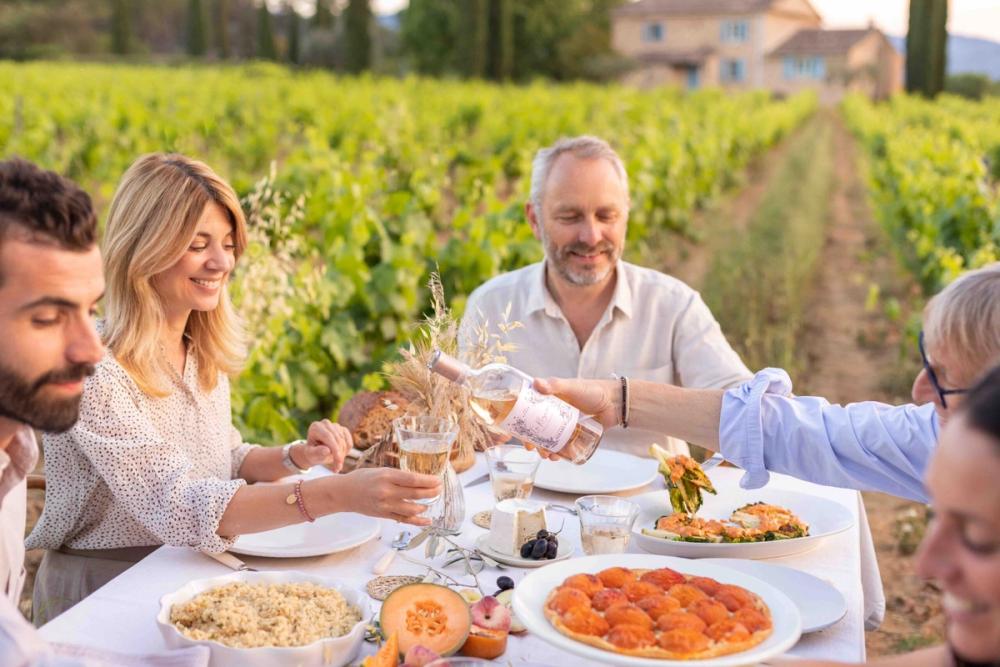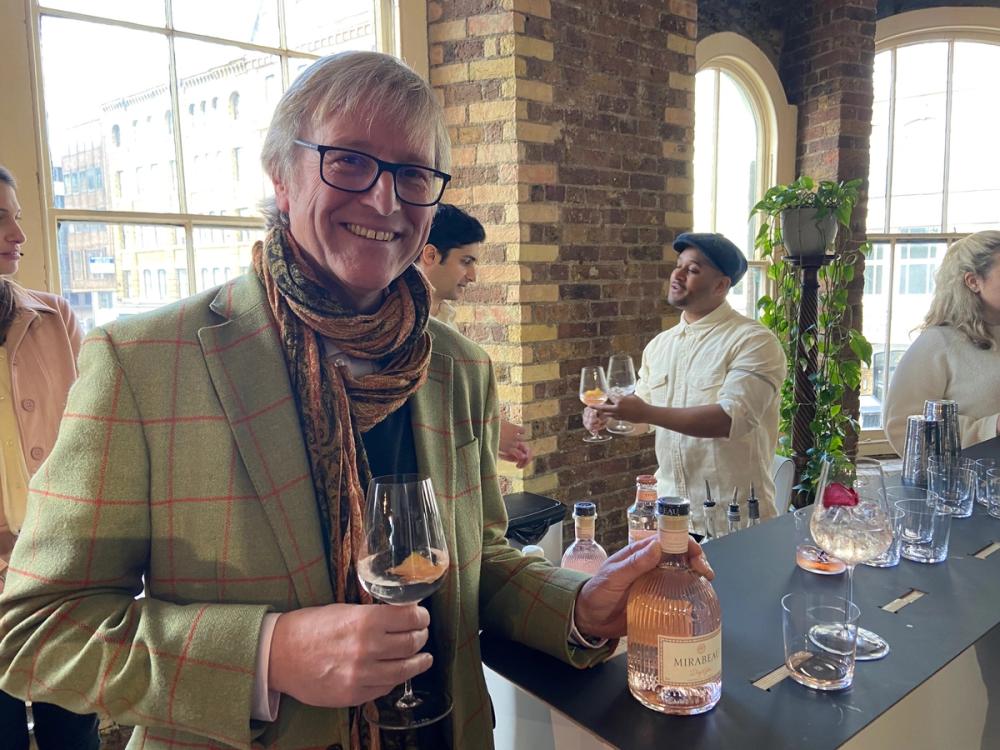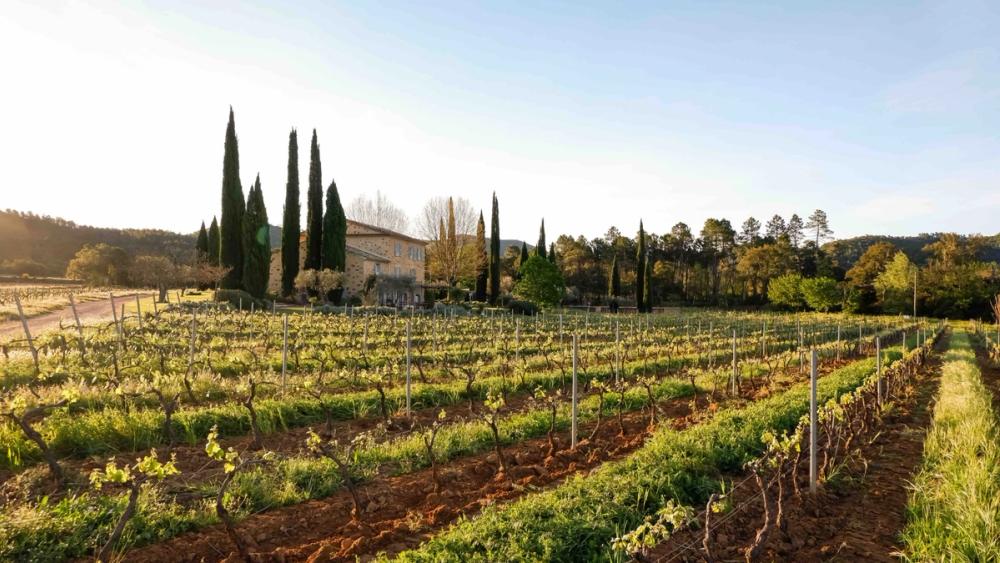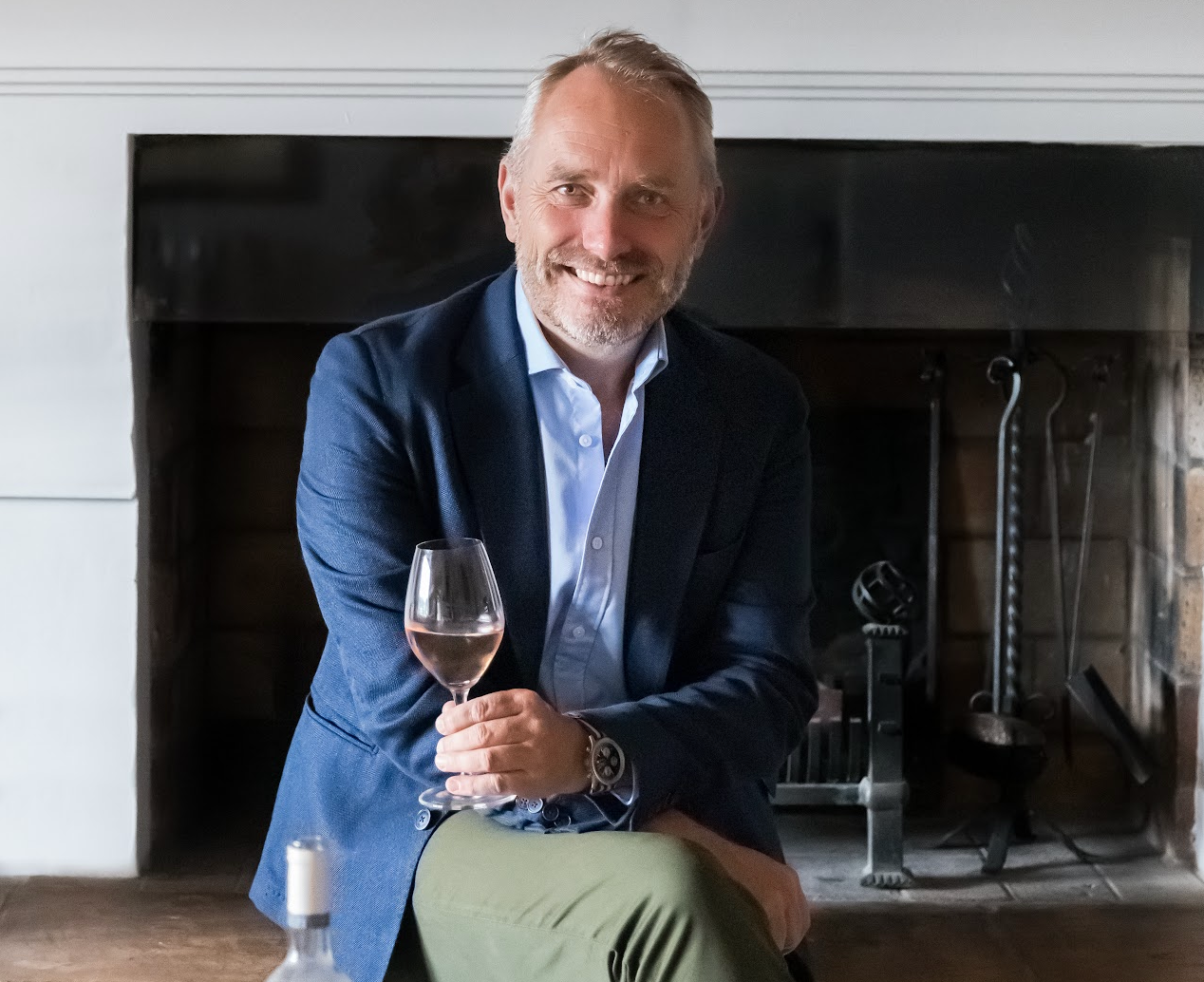The Mirabeau portfolio is now managed by a highly impressive team of brand experts skilled in handling luxury drinks products. Stephen Cronk explains in this wide ranging interview.
It’s not surprising that Stephen Cronk takes a big intake of breath when asked how the last year has gone. On the face of it things could not be better for the Mirabeau brand that he and his wife, Jeany, have painstakingly built up over the last 12 years into one of the most prominent and innovative Provence rosé businesses.

The full Mirabeau range was available to taste at its first portfolio tasting last month
The diversity, depth and quality of the wines shown at its recent London tasting shows how carefully the brand has been developed over those 12 years to serve different markets and customers. It now has a range that stretches across all the major commercial price points in the on and off-trades with enough clarity and difference between each line to make them work in their own right.
Yet for all that success Cronk is clearly still reeling from the devastating fire that wiped out the second vintage of its La Réserve estate wine that the Cronks had so proudly introduced to the market only last year. Nature had found its way of bringing them crashing down to earth.
But the Cronks, as producers have to do all over the world, have been quick to brush themselves down and get on with the business. They don’t have to look far for the positives that are pushing the Mirabeau brand forward.
They also can’t afford, however painful it was at the time, to be distracted from a business, that from a recruitment point of view, has doubled in size over the last two years.
“We have had to bring in more resources across the board,” says Cronk, be it on the operational side to ensure it is optimizing quality across all its wines, through to administration and keeping up with the company’s growth, to the financial side of the company. “We now have nine people in the UK and 32 globally. Two or three years ago we had one sales person in the UK.”
Global appeal

Jeany and Stephen Cronk have been able to capture the lifestyle of Provence and helped to use that as the DNA and backdrop to building their Mirabeau Provence rosé brand
Mirabeau’s growth and, in particular, its strong on and off-trade commercial to premium portfolio – that stretches from Vin de France through to estate level – makes it a good fit to be working with RTMs globally. Its wines fit neatly into the different parts of the on-trade business, from mainstream multiple on and off-trade operators to the specialised independents and premium on-trade.
Mirabeau is now ideally placed between the on and off-trades, says Cronk, with its wines proudly sitting in Booths, Majestic, Ocado, Sainsbury’s, Tesco and Waitrose, but also a growing number of independent wine merchants and key on-trade accounts too.
“Brands often start in the on-trade and build a presence there before going into retail. But we did it the other way round.”
He adds: “We were very lucky that Waitrose gave us our first order and we became a retail-led brand as a result. Now we are building up the on-trade and see great potential there.” It’s why it has developed its range to include Azure, an on-trade exclusive Grenache, Syrah, and Cinsault blend, and it still has high hopes for its La Réserve estate wine, although only at limited quantities.
“With the on-trade we are selecting key prestige accounts we would like to work with and are lucky that many approach us as they know that we are innovative partners to activate the brand with. We’re especially proud of recent wins including D&D selecting Mirabeau as their house Rosé across their 34 sites, as have The Four Seasons Hotel Group in the US.
He says the impact of social media has changed the rules when it comes to traditional drinks distribution. “You used to build a brand in the on-trade and then scale it in the off-trade. That was correct in the past. People got to discover you via the wine list. But now social media and digital can help you bridge that gap between the on and off-trades.”
Digital first business

Mirabeau has been able to use Instagram to drive the brand and Provence to its followers with professional photography focusing on the flora, fauna, food, scenery and overall culture and lifestyle of Provence
It’s why it is unashamedly a “digitally intuitive ” business, says Cronk. Its strong focus on social media and building a presence online means Mirabeau has become one of those rare wine brands that has traction, profile and awareness outside of the wine sector as a lifestyle brand in its own right. That has been the focus for the Cronks from day one. To build a quality brand that people can engage and relate to in just the same way they might do with a perfume or fashion brand.
That’s a lot harder to do than say and it is noticeable how many of the growing Mirabeau team have joined from luxury and lifestyle brand backgrounds, particularly premium spirits, including former senior LVMH and Diageo executives.
Richard Beaumont, for example, Mirabeau’s chief marketing officer, used to be brand director for Krug Champagne and Dom Perignon in the United States during his time at LVMH.
“It’s key for us to have those standards around brand building,” says Cronk. “They are some of the best examples in the world of top luxury brands. There are lots of learnings we can take from Champagne and apply to the world of rosé.”
Like setting the benchmark for rosé wine in terms of quality and image for the rest of the world to follow, he says.
It’s why developing and introducing its own estate wine was a vital part of Mirabeau’s brand story. It has allowed Mirabeau to focus on producing the highest quality wine it can from the region and aim for an ambitious terroir expression.
“For us it is about how far can we take Provence rosé as a style. La Réserve is a stunning wine and it raises the bar where you can take Provence rosé.”
It is that attention to detail that luxury brands have across all aspects from the liquid, to the bottle design, the packaging, the label, right through to the point of sale, and imagery used across social media that Mirabeau wants to follow. Each one of those elements is cared for to ensure it hits and fits in with Mirabeau’s overall brand philosophy and credentials.

Attention to detail. The recent London tasting was a celebration of Provence, with touches of Provence pink around the room
Its recent London tasting was full of pink touches, from the flowers, to the canapés to the pink shirts, tops, dresses of the Mirabeau team. It even had a pink sofa. Attention to detail you don’t get at your everyday wine tasting.
It’s why most of the new recruits to the UK team are marketing and communications specialists, says Cronk.
“We have always approached our marketing from the consumer stand point and not the producer’s,” he explains. “We look at it through a consumer’s perspective and why they are choosing one wine over another. We are a very consumer centric business and our investment in storytelling through PR has resulted in us having the biggest volume of press articles in the UK for a Provence rosé in 2021”
Gin expansion
A mark of how far Mirabeau is recognised as a brand in its own right has been the success of Mirabeau Gin since it was introduced as an exclusive to Waitrose in January 2020. Developed with Alex Ignatieff, former wine and spirits buyer at Harvey Nichols, the brand has taken on a life of its own and shown how a wine brand can successfully transfer over into the fiercely competitive branded world of premium spirits.

Alex Ignatieff, former wine and spirits buyer at Harvey Nichols, has helped source and develop its new Mirabeau gin brand
But again the brand has been supported by bringing new talent into the business that have the background in premium spirits. Richard Larkin has recently arrived from a leadership role at Casamigos, the premium tequila brand co-founded by George Clooney, after 20 years at Diageo, joining as chief commercial officer following Emma Wykes, from Seedlip the zero-alcohol brand, having supported the business as an interim consultant to help position the gin.
International strategy
Whilst the UK remains its biggest international market and where the bulk of its ‘brand’ team is based it is also building strong growth in different markets around the world. Particularly Germany, where Jeany Cronk was born, and from where it has number of investors.
It is now working with the respected German drinks distributors, Eggers & Franke Group, to help build distribution in Germany and has had someone in the German market for the last two years.
“We want to go deep in Germany. It is a big growth market for rosé wine and has lots of potential,” says Cronk.
It is also working with Nimbility, the specialist marketing and distribution agency in China and Asia, to help build its business in the region.
“We are really excited to be working with them. They cover all the main markets and are a very good company for us as they focus so much on brand building. You can’t use Facebook or Instagram in China, so we are having to start all over again with the Chinese equivalents.”
Nimbility is also able to help with the sort of branding, imagery and photography that will work well in the Chinese and Asian markets that might be different to what they would usually use.
But then they are used to having to work with the French “Loi Evin” regulations that are very strict in how you promote and work with images and alcohol.
“All the imagery we use has to be mindful of all the countries we operate in. You have to think about a national and international approach.”
Going direct
Going direct to the consumer via its own e-commerce site is also an important part of the business, but more from a strategic, relationship point of view with its customers than driving serious revenue, stresses Cronk.
Its DTC prices will always be the highest in the market, but it is a platform where it can trial and introduce new lines, like the rosé vermouth it launched last year, and enable consumers to enjoy their point of sale materials, be it ice buckets, bespoke candles or picnic baskets that help with its lifestyle positioning too.
“Most of our retail customers have a strong online business, so we are not competing with that. It is big journey to change people’s buying habits to buy direct from a producer. It is different in the US and Australia, but we are not there yet.
“What it does do, though, is give you a window into the digital and online world and a good consumer mailing list.”
Mirabeau’s regenerative strategy

Stephen Cronk has been inspired by regenerative farming practices since starting to make Mirabeau’s own estate wine
It is understandable the conversation keeps going back to Mirabeau’s estate property and vines and the damage caused by last August’s fire. “The vines long term will be fine,” says Cronk. “But the vineyards have suffered severe burning around the edges.”
The fire destroyed much of the 2021 crop and whatever grapes they could pick were damaged by smoke taint. “We tried to do some bucket ferments but quickly realised the wine was not going to work, so we had to give up the barrels. It was really heart breaking.”
Thankfully Mirabeau’s négociant model, whereby it is working with growers across Provence for its main commercial wines, meant the main part of the business could carry on as normal.
It does, though, still have a “few 100 left” of the 3,000 bottles from the 2020 La Réseve vintage so it still has wine with which to build the brand and tell the story.
The Cronks’ move into estate winemaking has also sparked a committed focus on concentrating on regenerative farming practices and seeing what they can do as a producer to drive healthy viticultural practices, regenerate the soil, restore biodiversity and crucially sequester more carbon
Stephen Cronk has founded the Regenerative Viticulture Foundation to provide a platform and network of experts who can take the lead on regenerative viticulture and provide advice, information and support to producers and oenologists and anyone in the trade looking to make meaningful change to how they work with soils and viticulture.
By having its own estate wine Mirabeau wants to lead the conversation by “building up evidence to convince others about the benefits of regenerative farming”.
Changing mindsets

Stephen Cronk says the Regenerative Viticulture Foundation hopes to help change winemakers’ ‘mindsets’ when it comes to the steps they can take to keep their soils healthy
“It’s a mindset mind set change,” says Cronk, who understands why producers are cautious and nervous about making big changes to how they work their vineyards and what impact it will have on their production. “We can provide them some support and show them the benefits of regenerative viticulture.”
It’s clearly going to be long process, but Cronk is determined Mirabeau can play its part and was able to share the principles and objectives of the foundation to the trade at an event in London last month. “We wanted to use the event to create a conversation about what we are trying to achieve,” he says.
“It’s not a radical change but it is going beyond organic winemaking and more towards biodynamic. But it’s very much more focused on soil quality, reduced tillage and working in harmony with nature rather than a mono culture approach. Producers may be already doing aspects of regenerative farming, but call it something else such as agroecology or permaculture. We are not trying to re-invent the wheel. Some of our trustees have been doing this for 10 years, or more, and are seeing improved quality and reduced input costs.”
Widening Cronk’s aim is to get a critical mass of producers on board who collectively can demonstrate their role as winemakers goes beyond simply producing grapes, but how they are part of the wider eco system.
“We want our research to focus on the scientific and economic data that backs that up.”
Ultimately the proof, the evidence if you like, sits in the wines that Mirabeau is producing from its own estate, Domaine Mirabeau. Rather than giving the wine a vintage last year, they called it Prèmiere Année, as it is the first year of the estate’s path to regeneration.
“It’s the first time we have brought all our wines together for the trade and press to taste together. It is incredible to think we are now in a position to do a portfolio tasting when we just started out with one wine,” says Cronk.
A portfolio of wines that together are helping not just to tell the story of Provence, but what is possible with rosé as Mirabeau continues its journey up the premium wine ladder.
- You can find out more about Mirabeau at its website here.
































